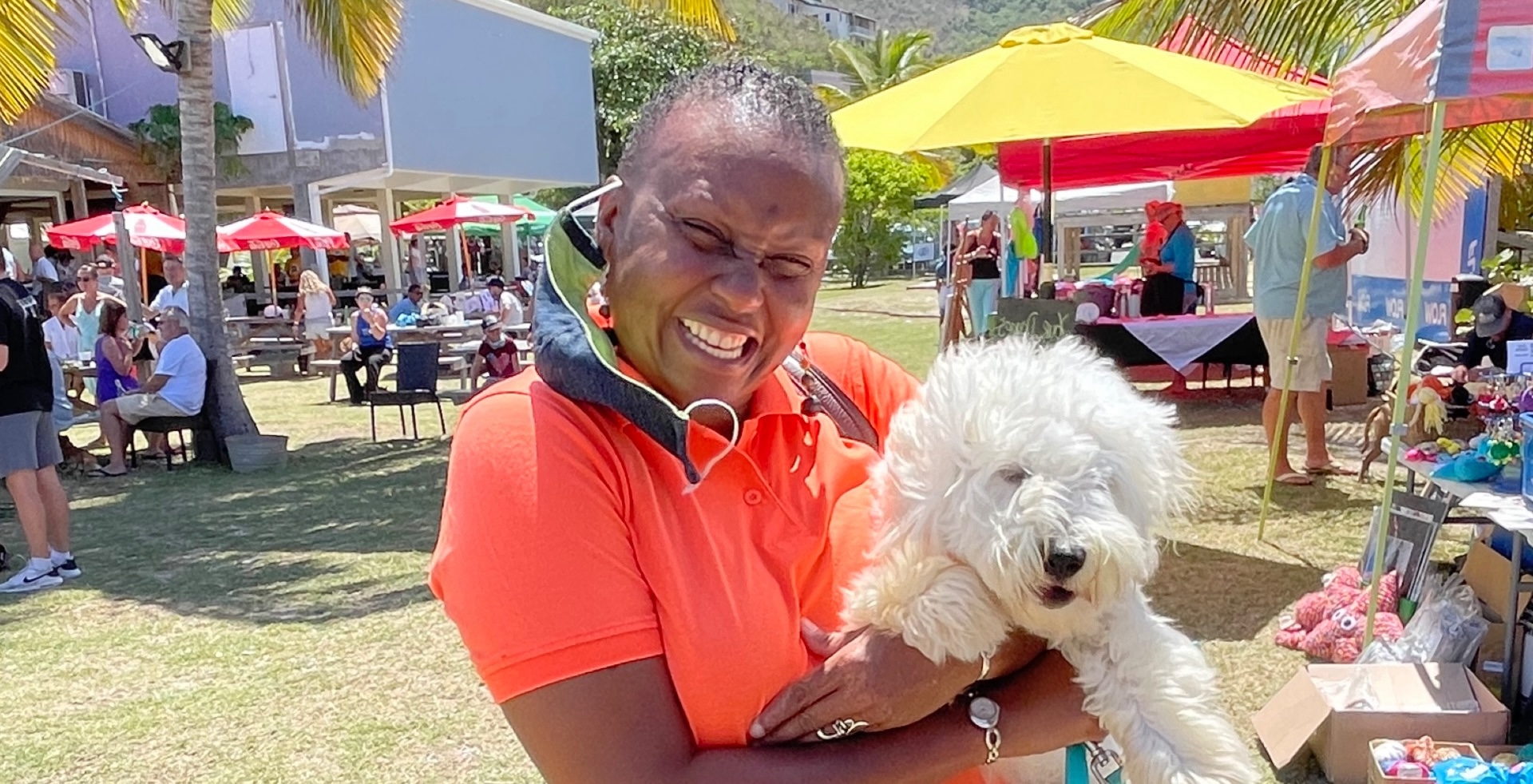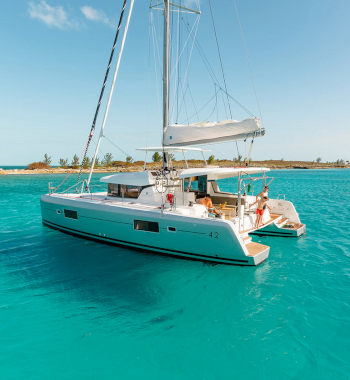Kew Gardens and the VI National Parks Trust Team Up
A few years ago I had the opportunity to accompany an expedition to search for rare and endangered plants with staff from the BVI National Parks Trust and botanists from Kew Gardens, the world famous botanical gardens located in London. Through the Millennium Seed Bank Project, the Kew researchers along with the National Parks Trust collect seeds from the BVI’s endangered native plants. A portion of the seeds are dried and sent to Kew Gardens’ special seed bank facility in England, where they are stored for the proverbial “rainy day”. A vast collection of seeds from around the world are also stored at the facility, an important insurance policy against a species’ extinction through disease and habitat loss.
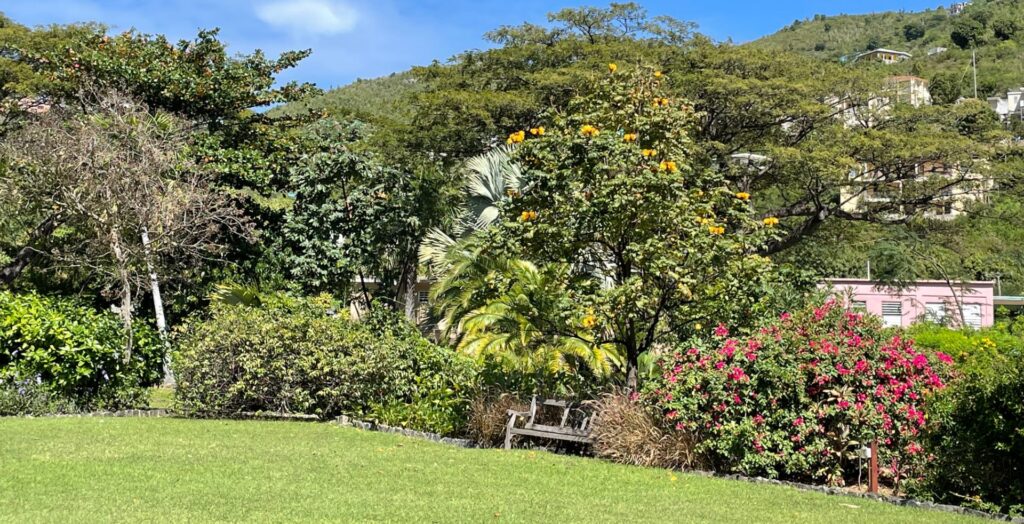
It was interesting to tag along with a group of people who can spot a rare plant amongst rocks and scrub while a layman like me would waltz right past it – and in a worst case scenario, crush it underfoot. The botanists not only collected samples but using a handheld computer recorded its exact position, which will be fed into the National Geographic Information System (GIS) and can later be used by the Planning Department when considering development applications.
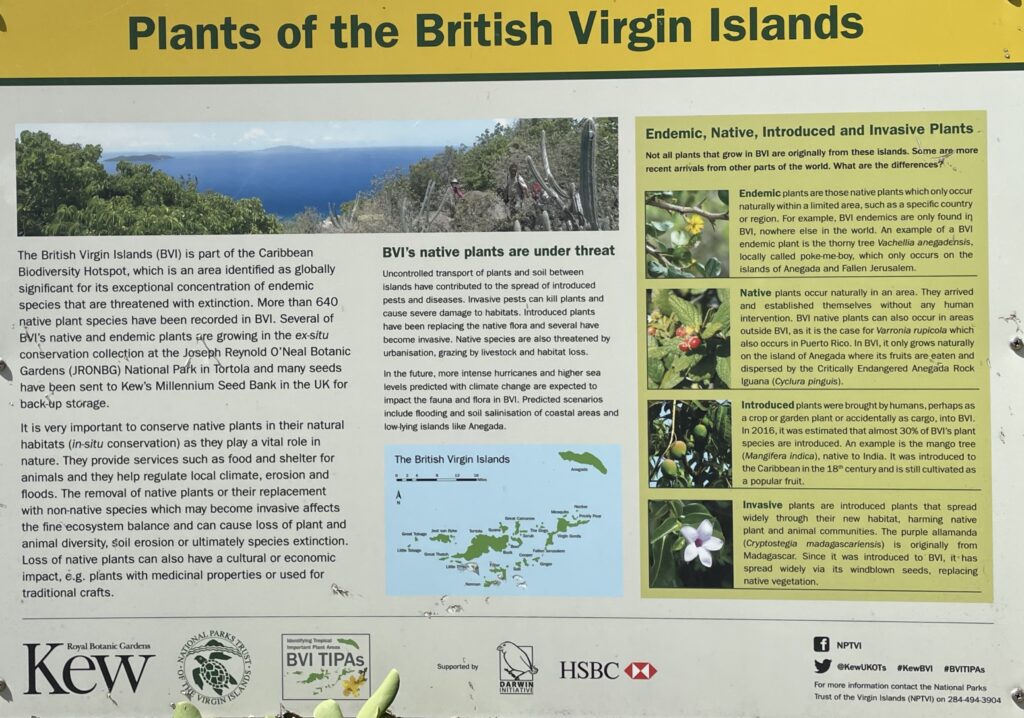
Among the rare specimens that The BVI National Parks Trust and Kew Gardens botanists have found are new stands of the rare endemic plant known as Senna pollyphylla var neglecta on Anegada. With this new find, the researchers believe this delicate plant with the big name has a much greater chance for survival. This is a team effort, and even when the Kew researchers are not on island, sharp-eyed staff members from the National Parks Trust continue to traverse the islands looking for that special find.
Many of these rare species are also propagated at the nursery at the J. R. O’Neal Botanic Gardens to ensure that the species will carry on, even if it is lost in the wild. The J. R. O’Neal Botanic Gardens’ “Conservation Garden” showcases rare endemic and endangered plants. Here the Senna pollyphylla is growing along with several other native plants including the lignum vitae, known for its extremely hard wood, the Acacia anegadensis, locally called the “Poke Me Boy” because of its thorns, and the aptly named Mad Dog (Malpighia woodburyana), whose leaves irritate the skin when touched.
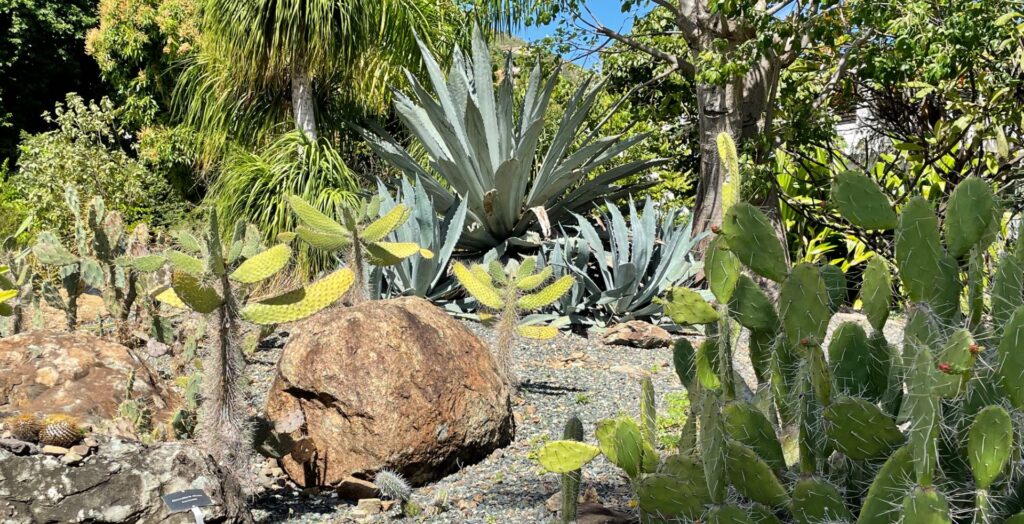
Eventually The BVI National Parks Trust hopes to feature native species throughout the garden. They also are encouraging home gardeners to plant the natives as an alternative to imported exotics which can carry pests and diseases that endanger the endemics and their habitats. Many of the rare endemics that are propagated at the Botanic Gardens are offered for sale to the general public.
I’m not the gardener in my family, but I do enjoy our garden as a peaceful oasis in a hectic world. I also appreciate how important preserving the earth’s rare and endangered plant life is and the efforts towards this end that are being made by the Virgin Islands National Parks Trust and their partners at Kew Gardens.
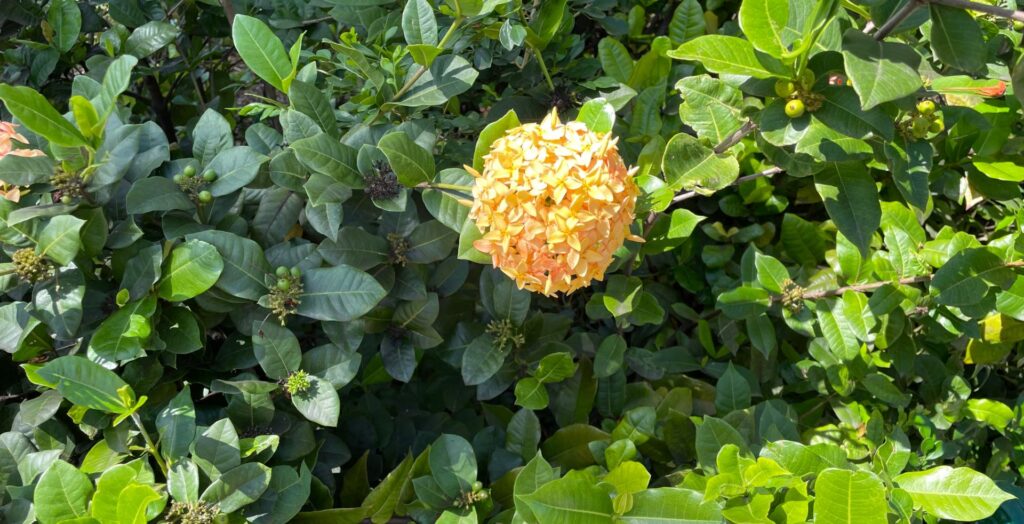
The J.R. O’Neal Botanic Gardens in Road Town is a great place to discover the BVI’s native species, as well as enjoy the many exotic plants and trees found not only here in the Botanic Gardens but in home gardens throughout the Virgin Islands.
For more information on the J. R. O’Neal Botanic Gardens and the BVI National Parks Trust go to
To learn more about Kew Gardens and its work to save endangered species worldwide go to
You can find additional information on the JR O’Neal Botanic Gardens and other BVI national parks at

